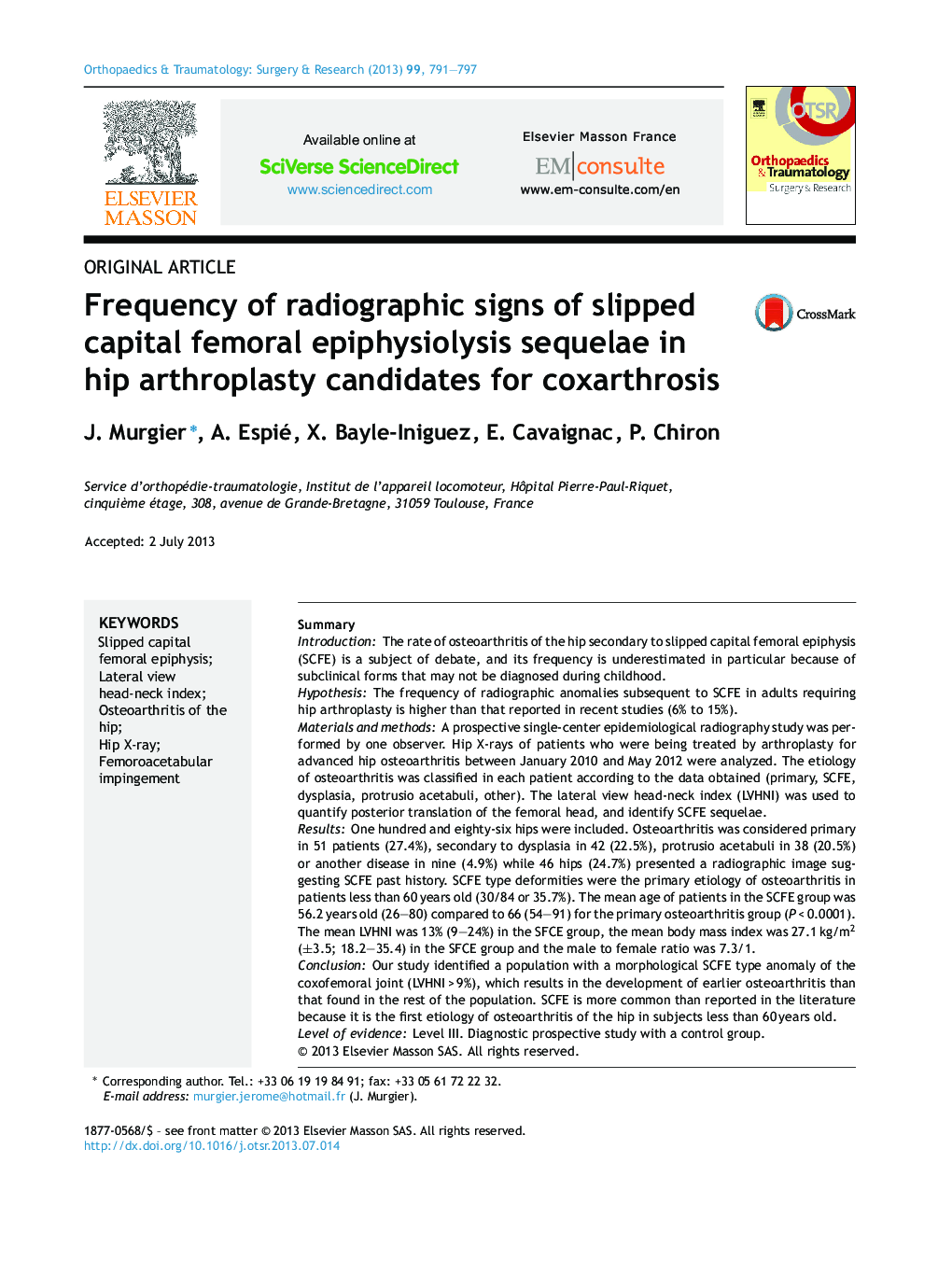| کد مقاله | کد نشریه | سال انتشار | مقاله انگلیسی | نسخه تمام متن |
|---|---|---|---|---|
| 4081617 | 1267601 | 2013 | 7 صفحه PDF | دانلود رایگان |

SummaryIntroductionThe rate of osteoarthritis of the hip secondary to slipped capital femoral epiphysis (SCFE) is a subject of debate, and its frequency is underestimated in particular because of subclinical forms that may not be diagnosed during childhood.HypothesisThe frequency of radiographic anomalies subsequent to SCFE in adults requiring hip arthroplasty is higher than that reported in recent studies (6% to 15%).Materials and methodsA prospective single-center epidemiological radiography study was performed by one observer. Hip X-rays of patients who were being treated by arthroplasty for advanced hip osteoarthritis between January 2010 and May 2012 were analyzed. The etiology of osteoarthritis was classified in each patient according to the data obtained (primary, SCFE, dysplasia, protrusio acetabuli, other). The lateral view head-neck index (LVHNI) was used to quantify posterior translation of the femoral head, and identify SCFE sequelae.ResultsOne hundred and eighty-six hips were included. Osteoarthritis was considered primary in 51 patients (27.4%), secondary to dysplasia in 42 (22.5%), protrusio acetabuli in 38 (20.5%) or another disease in nine (4.9%) while 46 hips (24.7%) presented a radiographic image suggesting SCFE past history. SCFE type deformities were the primary etiology of osteoarthritis in patients less than 60 years old (30/84 or 35.7%). The mean age of patients in the SCFE group was 56.2 years old (26–80) compared to 66 (54–91) for the primary osteoarthritis group (P < 0.0001). The mean LVHNI was 13% (9–24%) in the SFCE group, the mean body mass index was 27.1 kg/m2 (±3.5; 18.2–35.4) in the SFCE group and the male to female ratio was 7.3/1.ConclusionOur study identified a population with a morphological SCFE type anomaly of the coxofemoral joint (LVHNI > 9%), which results in the development of earlier osteoarthritis than that found in the rest of the population. SCFE is more common than reported in the literature because it is the first etiology of osteoarthritis of the hip in subjects less than 60 years old.Level of evidenceLevel III. Diagnostic prospective study with a control group.
Journal: Orthopaedics & Traumatology: Surgery & Research - Volume 99, Issue 7, November 2013, Pages 791–797